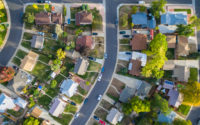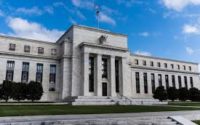A Look at California’s Changing Demographics Over the Past 40 Years
California counties are becoming more diverse, but not uniformly across the state. Data visualization by student researchers at the Lowe Institute illustrates the geographic heterogeneity in the rapidity of this process. The increasing prevalence of Hispanics in the agricultural central valley and Asians in the Bay Area, the early diversity of the Los Angeles area, and the persistent Caucasian homogeneity in the Northernmost parts of the state are detailed in the following set of interactive time-lapse maps.
As America has become more diverse over the past two centuries, the U.S. Census Bureau has expanded its options for racial classification. Certain choices only appeared in recent decades; for example, the ability for individuals to identify specifically as ethnically “Hispanic or Latino” was first included in the 1970 census. Moreover, until 1980, individuals self-identifying as Asian Indian and Vietnamese were classified in the category of “Some Other Race” rather than in their current grouping as Asian. Thus, our analysis focuses on the decades from 1980 onward in an effort to standardize findings.
The percentage of the population that self-reports as “Hispanic or Latino” has steadily increased, with the largest changes witnessed in California’s mid and southern counties. For example, Tulare County, located 2 counties north of Los Angeles, reported 29.8% of its population as “Hispanic or Latino” in 1980, but by 2010, the most recent census year, that statistic had ballooned to 60.62%. The Bureau of Labor Statistics reports in a 2017 survey that educational attainment for “Hispanic or Latino” population in the US was predominantly lower than other races, with 56% having a high school diploma or less. In addition to the closer proximity to Latin America, these counties are known for their agricultural and service industries, which could explain the population shift, as these industries demand a high number of unskilled workers.
Meanwhile, counties located near and around San Francisco bay have experienced a surge in their percentage of population that identifies as Asian. One of the largest movers was Santa Clara County, which experienced an increase from 7.4% of its population self-reporting as Asian in 1980 to 32.0% in 2010. Counties located near San Francisco are home to a number of technology companies, including Google, Apple, and Facebook. According to a study by the US Equal Employment Opportunity Commission on Diversity in High Tech, the participation of Asian Americans in high tech industries is second only behind the White population, despite being outnumbered by both Blacks and Hispanics in the overall labor force.
Additionally, there has been an uptick in the population categorized as “Some Other Race”. In San Bernardino County, for example, 26.6% of its population identified as “Some Other Race” in 2010, nearly tripling from the reported 9.46% in 1980.
The rise in the “Some Other Race” category may be attributed to several factors, such as tricky wording in the options for racial classification which define “Hispanic or Latino” as an ethnicity rather than a race. Likewise, despite becoming more racially specific, the census still lacks categorical choices for individuals from Middle Eastern and Northern African descent. Furthermore, because the census is based on self-reported choices, the increase in the population identifying as “Some Other Race” may be the result of an those who report two or more races. For example, someone who self-reports as “White” and “American Indian or Alaskan Native” would be categorized as “Some Other Race” in our visualization.
Ultimately, census categories lag behind the changes in the population they are intended to catalogue. But they can nonetheless paint, albeit in broad brush strokes, the trajectory of ethnic diversity in our state and remember that history differs across locales.
Article by Jess Fang and Dustin Lind.


